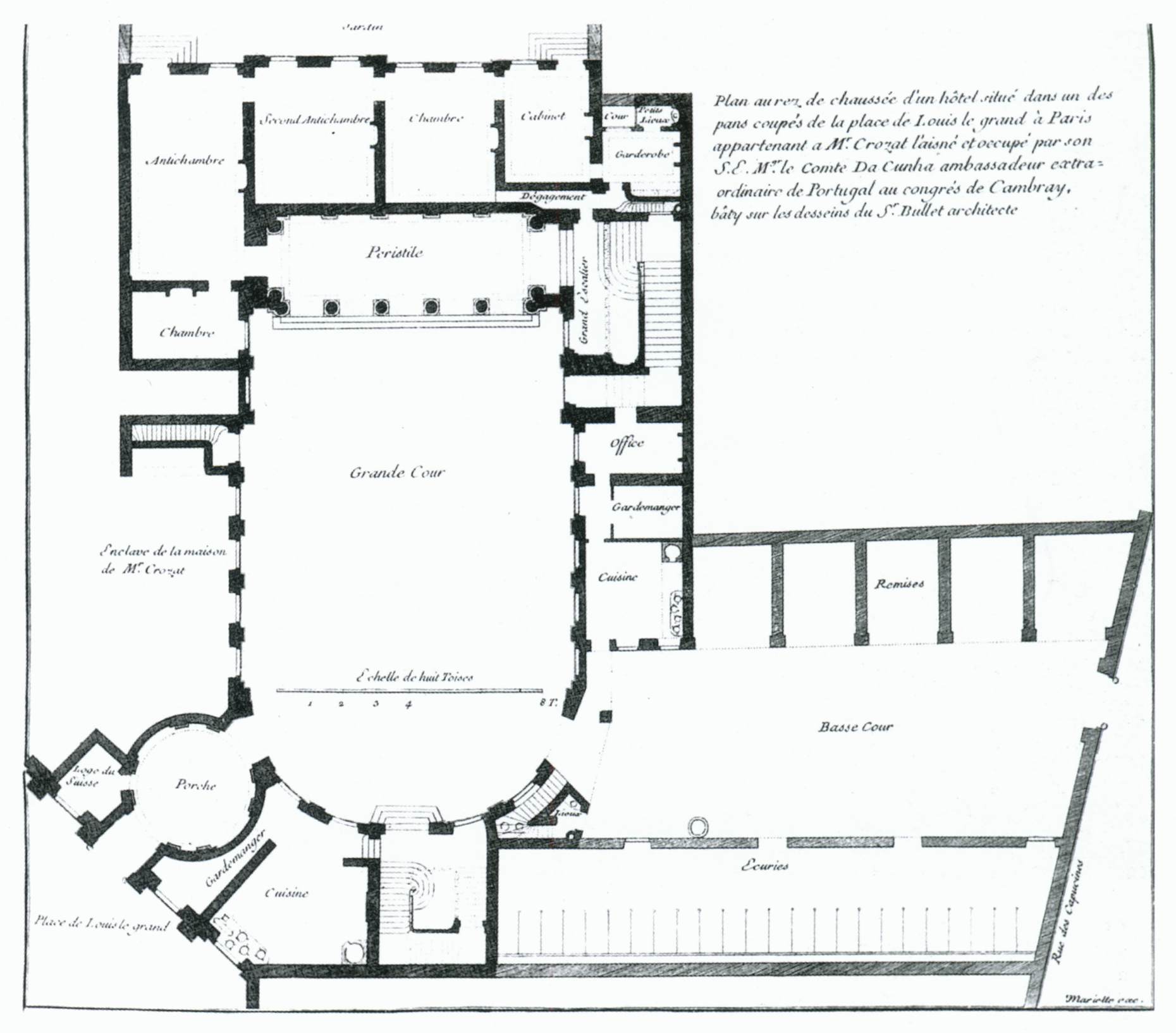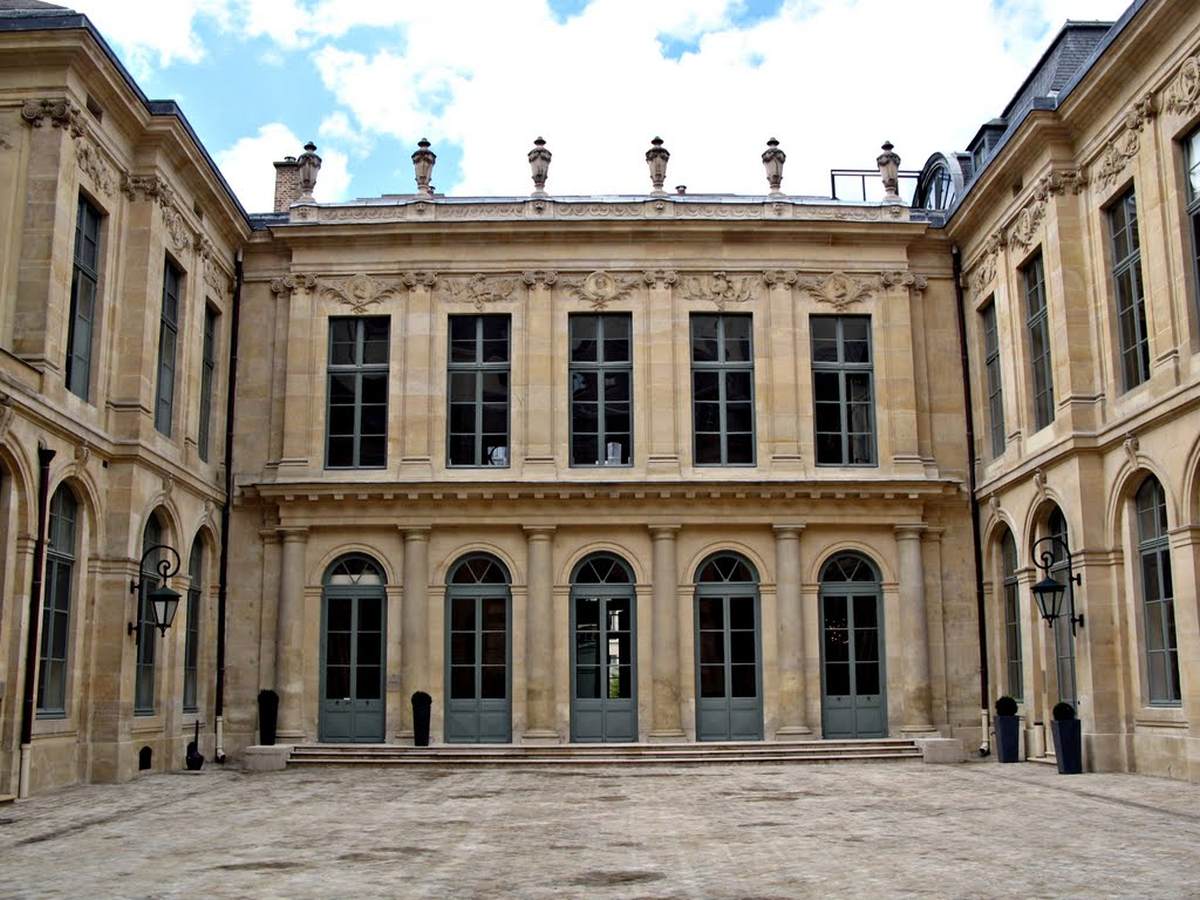French architect and city planner. He was the son of a Parisian master builder, Martin Bullet (active 1608, d. after 1639), and rapidly made his reputation as an architectural draughtsman, producing a plan of Paris for the city council (1665; Archives Nationales, Paris). In 1672 he was admitted to the Académie Royale d'Architecture, where he became a disciple of the director François Blondel (1628-1686). He was appointed as a draughtsman to the Académie in 1673, with a full fellowship in 1685. In 1672 Bullet completed the triumphal arch of the Porte Saint-Denis, designed by François Blondel, on the new, tree-lined boulevard with which Louis XIV replaced the former rampart, and two years later he built the Porte Saint-Martin to his own design.
Bullet's experience with Blondel also led to a commission from the city council for a new map of Paris (1676, reprinted in 1700 and 1707), showing the improvements decided upon by the king. He also collaborated actively on municipal works in Paris, such as the first Saint-Michel fountain in 1684 and the Quai Pelletier and Quai de Gesvres, a daring overhanging construction above the River Seine. His contribution to religious architecture was also significant. In 1675 he designed the main altar in the church of the Sorbonne and the altars in the transept chapels of Saint-Germain-des-Prés, and in 1676 he submitted a project for Les Invalides in collaboration with Jules Hardouin-Mansart. He worked for various religious orders, including, in 1681, the Ursulines of Bourges and the Visitandines of Chaillot; he also worked on the reformed Jacobins' noviciate in the Faubourg Saint-Germain in 1682-83 and, from 1712 to 1720, on the priory of Saint-Martin-des-Champs.
Bullet's reputation, however, is based mainly on the building of châteaux and town houses, especially the design of their façades. One of his first commissions was for the palace (1681) in Bourges for Archbishop Phélypeaux de La Vrilliere, only one wing of which was completed. He also produced plans for the archepiscopal palace in Cambrai, but his major work was the Château d'Issy (destroyed 1870) at Portes de Paris (Hauts-de-Seine). In 1686 Bullet built an isolated house of almost square plan for Denis Talon, the Assistant Public Prosecutor at Châtelet. Among his surviving Parisian town houses are those of Le Peletier de Souzy (29 Rue de Sévigné, 1686-87); Amelot de Chaillou (78 Rue des Archives, 1702); and Vouvray (57 Rue Cuvier, 1708).
Bullet also played a major role, with Jules Hardouin-Mansart, in the development of the Place Vendôme. In 1699 he suggested a plan for the transformation of the square (around which he had bought several plots of land), and many buyers entrusted him with the task of building their town houses behind the uniform façades. Bullet was forced to modify the traditional arrangement of apartments that he had used in the Le Peletier and Amelot de Chaillou residences in order to give the rooms an attractive outlook over the square and, at the same time, to provide these residences with all the conveniences of an independent hôtel arranged around one or two courtyards. Thus, at the Hôtel d'Évreux (no. 19) the coachman's passage, situated in one of the cut-off corners of the building, leads to a rectangular court with a semicircular end, beyond which stands the corps de logis between court and garden. Bullet's plans show the changing axes of the apartments skillfully articulated within circular or oval halls.
Bullet was interested in all technical problems affecting the work of architects and engineers. His Architecture pratique was used by builders for over a century as a convenient handbook containing descriptions and appraisals of architectural works and incorporating elementary primers on geometry and public law. Although Blondel remained a lasting influence, Bullet's remaining works and numerous drawings, collected by Carl Harleman, reveal his borrowings from Vitruvius and his debts to Vignola and, particularly, Palladio. The buildings of his contemporaries Bernini, Louis Le Vau, François Mansart and Jules Hardouin-Mansart also influenced him but left scope for the personal expression that created his characteristic style, a blend of restraint and austerity. His use of columns was restricted to a few projecting parts of his façades, while the rhythm was obtained by using arcades on the ground floor, rows of pilasters, and even more by the noble simplicity of the channeled stonework. Decoration was applied to the large triangular pediments surmounting the usual three-part frontal sections of the building and to the circular medallions applied to the façades (as at the Hôtel Amelot). His majestic internal staircases, for example at the Hôtel Amelot and Hôtel Le Peletier (where, as a surprising novelty the banister is in cast iron), rank with those of François Mansart, Jules Hardouin-Mansart and Robert de Cotte.
//
![]()







